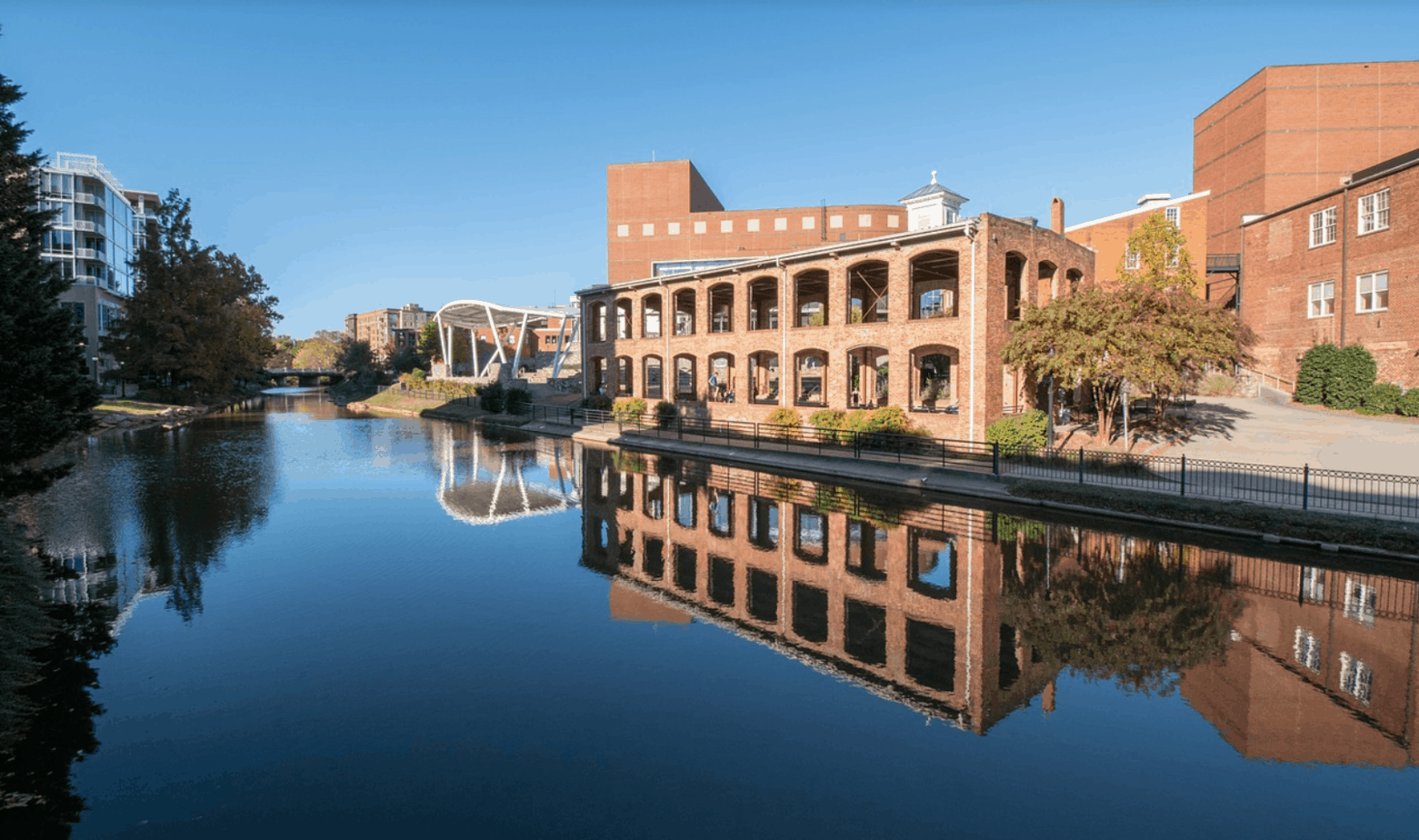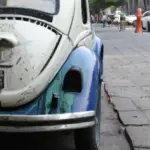Greenville, South Carolina, a former textile center located in the upstate (the northwest corner of the state, essentially), has been getting plenty of buzz lately. The city has been reborn as a regional destination, one with a strong local economy and a robust culinary and arts scene.
A few years back, Conde Nast’s Traveler readers voted us the #3 small city in the country. We’ve made the New York Times travel page more than once, too, once being called “the next Charleston.” (But, you know, without the flooding.)
All that press is nice, and Greenville is indeed a lovely place to visit. But what is it like to actually live here? Living in Greenville, South Carolina, is a multifaceted thing, and there are literally hundreds of thousands of perspectives on the topic. There’s no way to cover the topic in-depth in a single post. Some snapshots of life here will have to do.
So here’s our best attempt at summing up what it’s like to live in Greenville, South Carolina.
A Thriving Downtown Serves as a Model of Revitalization
Pictured: Main Street in downtown Greenville is walkable and tree-lined.
Any tourism or travel-related piece about Greenville is going to touch on downtown, and for good reason. Downtown Greenville is just plain cool. Walkable, tree-lined streets and over 100 mostly local restaurants along a mile or two of Main street make for some great photos and even better memories. Falls Park on the Reedy is a destination in and of itself. Liberty Bridge, the park’s single-sided suspension bridge, is the only such bridge in the entire United States.
Pictured: Built in the mid-2010s, ONE City Plaza brings new life to the downtown core.
Everywhere you look downtown you’ll see growth. New apartments and condos are popping up everywhere, including the new Camperdown Project, which is taking its place as the newest downtown tower. At 17 floors, only the Windstream building is taller in all of Greenville.
The downtown real estate scene is pricey for the area. You’ll need a well-paying job or a solid retirement portfolio to live comfortably downtown. But the vibe is cool, and it’s where people want to be.
Textile History and Mill Villages a Unique Dynamic
Before Greenville’s rebirth, it was a textile town. This history is deeply interwoven throughout the region. One unique aspect of the southern textile industry was (and is) the mill village. Many of the smaller communities surrounding Greenville used to be centered on, and often funded by, a mill. Examples include Taylors (Taylors Mill), Poe Mill, Woodside, Monaghan, West Greenville and many more.
These mini-cities were once thriving in their own way. As the textile industry collapsed here, the mill villages remained. But many suffered great economic hardship as there were not enough unskilled labor jobs to fill the void.
Today, some mill villages are thriving, having found some form of rebirth. West Greenville transformed into an arts hub. Some villages “rebranded” as suburbs. Others are gentrifying, while others have become hubs for immigrant communities. And some remain economically depressed. Several of the mills themselves have transformed into luxury apartments and condos with tremendous character. Some of these sit in the middle of otherwise distressed mill communities.
There is plenty of fascinating history to be found in Greenville surrounding the city’s textile heritage. Living in one of these mill communities can give you a unique perspective of the town. And if you’re looking to relocate here on a budget, there are plenty of real estate deals to be had if you know where to look.
Brick and Glass Everywhere
Pictured: The Peace Center overlooks the TD Amphitheater, the Reedy River, and a mid-2000s development representative of the “brick and glass” aesthetic.
Because there’s plenty of history (including architectural history), you do see a lot of brick in Greenville. Both downtown and in revitalized mills and warehouses throughout the city, brick and glass exteriors with industrial/historic interiors rule the day. Personally, I love the connection to history, and I think the aesthetic is perfect for our town. Others disagree, and that’s OK.
Universities Aplenty
Greenville is home to several colleges and universities, and each lends its own unique character to the city. Furman University, a prestigious private liberal arts university described as part of the “Ivy League of the South,” has a beautiful campus located between Greenville and Travelers Rest.
As far as religious schools go, there are several here. Bob Jones University is a private, non-denominational Protestant liberal arts university that has been located in the Greenville city limits since 1947. The institution is well known for its fine arts productions as well as its accounting, nursing, and pre-med programs. A bit out of town, North Greenville University is a Southern Baptist-affiliated university that also calls the Greenville area home. In addition to these universities, a number of seminaries operate in Greenville, including the Bob Jones University Seminary, Greenville Presbyterian Seminary, and Geneva Reformed Seminary.
Other regional universities with operations in Greenville include Clemson University (both the CU-ICAR Center for Automotive Research and a downtown business school operate in Greenville) and USC Upstate. The Medical University of South Carolina has a presence at Greenville Memorial Hospital as well.
Beyond four-year and graduate institutions, Greenville Technical College offers technical training and two-year associate’s programs.
A Thriving Creative Scene
Thanks in no small part to the two liberal arts universities in town (and generous corporate sponsorships from the large employers in town), Greenville has a thriving arts scene that far outpaces what you’d expect for a city of this size. The downtown Riverwalk boasts numerous dedicated artist studios, many of which are open studios as well as sales galleries.
The Metropolitan Arts Council funds numerous initiatives each year, including Arts in Public Places, Greenville Open Studios (where hundreds of local artists open their studios a few weekends a year), and Flat Out Under Pressure, a 24-hour art competition. Artisphere is an annual art festival that draws tens of thousands of visitors and is considered one of the country’s top art festivals.
The creative scene doesn’t end with studio art, either. The Warehouse Theatre, Centre Stage, The Greenville Theatre, and the SC Children’s Theatre all produce impressive plays and musicals. Fare ranges from the child-friendly to the avant-garde.
The concert scene is great, as well. The Peace Center hosts the Greenville Symphony as well as many national tours, including a Broadway national tour series. Rivertree Singers is a local community chorus many consider to be a hidden gem. Downtown is full of popular music concerts every weekend all summer long, too.
Abundant Outdoor Opportunities
Nestled in the foothills of the Blue Ridge Mountains, Greenville is full of outdoor opportunities. Fantastic state parks include Paris Mountain State Park and Jones Gap State Park. North about 45 minutes from Greenville, Caesar’s Head State Park is a must-see for novice and avid hikers alike. If you need equipment for your outdoor excursion, Sunrift Adventures is a great place to buy or rent the gear you need.
If you’re staying closer to home, Saluda Lake and the Saluda River are the best in-town destinations for boating, fishing and tubing, and the Prisma Health Swamp Rabbit Trail is a great multi-use rail trail and greenway that snakes some 22 miles through the city.
Wrapping Up
If you can’t tell by now, I think living in Greenville, SC is pretty fantastic. It’s not a perfect place, and not every corner is as beautiful as Main Street. But in the end, it’s a lovely place to call home, one with plenty to do and see.




